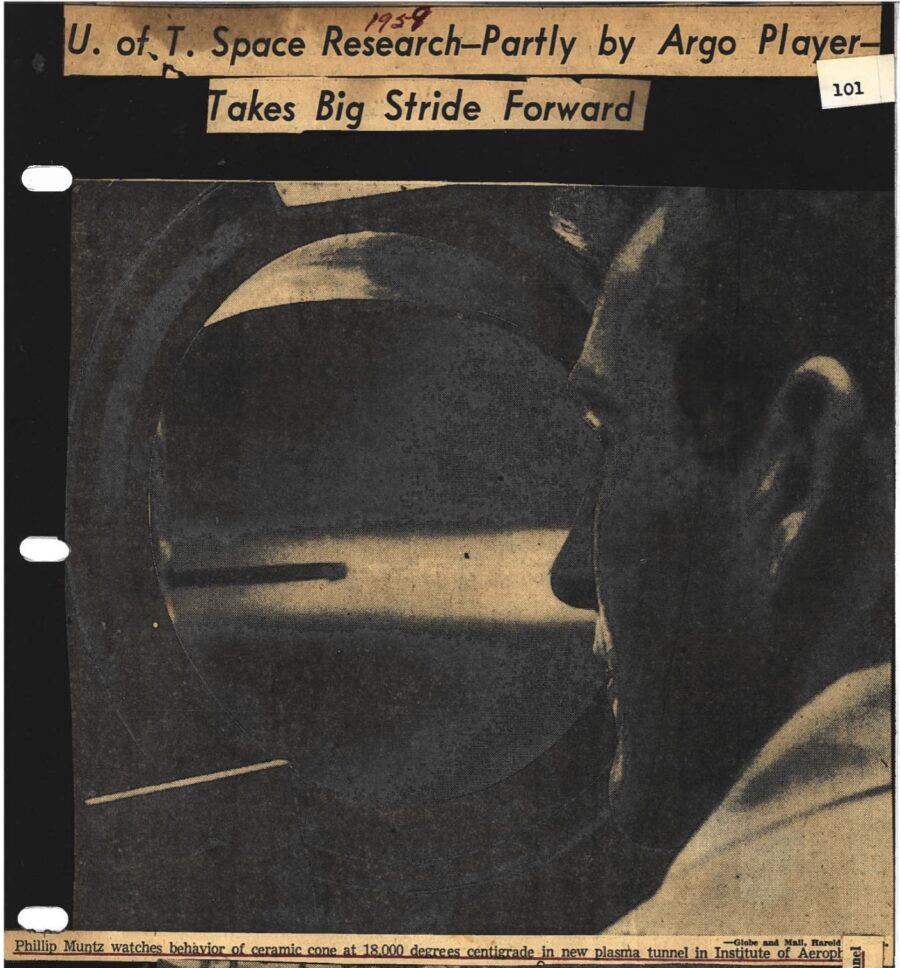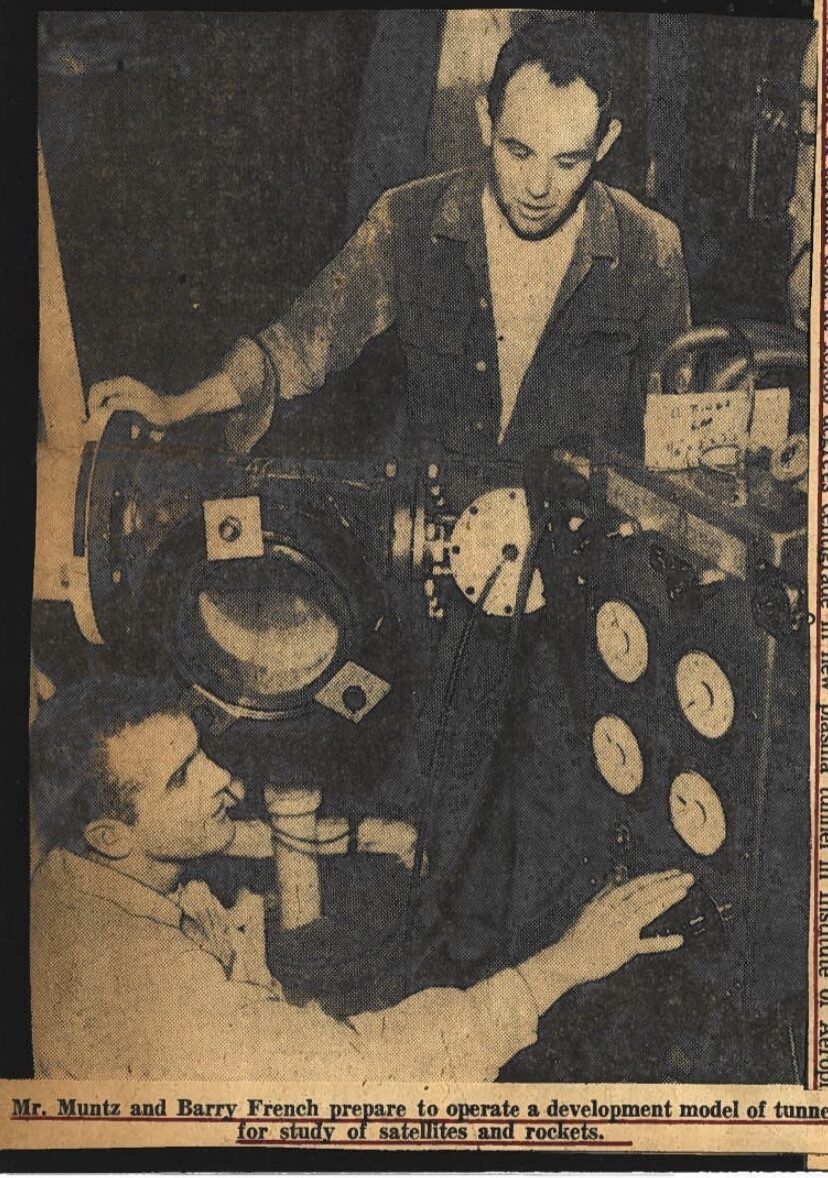I always admired Ken Dryden. He was an amazing goalie and a very articulate lawyer, and that’s an unusual combination. So, when I came across these news clippings about Argo football player Phil Muntz working on his PhD at UTIAS, it piqued my curiosity.
We can see from the news clippings that Muntz’s supervisor was Professor Barry French. Unfortunately, there is no accompanying article, but we can determine from the headline that Muntz and French were involved in groundbreaking research.
Google revealed a couple of things quickly: Muntz had been a respected professor at the University of Southern California, and he had also been a star football player. According to Wikipedia, Muntz played for the Argos from 1957 – 1960 AND he graduated from UTIAS with both an MS and a PhD in 1961! This sounded like a story worth pursuing.


Unfortunately, Phil Muntz died in 2017, so I was not able to talk with him. However, after a little more digging I found an In Memoriam from USC and an obituary from the Globe and Mail which together tell an impressive story.
So, without further ado, here is an edited version of the story of Phil Muntz:
“A scientist and an athlete, Phil Muntz attended Trinity College School, Port Hope, then the University of Toronto. While studying for his degree in Aeronautical Engineering, Phil was a star Fullback for the U of T football team, and he earned his wings as a Flying Officer in the RCAF Reserve with the renowned 400 Squadron. He then joined UTIAS for his Masters and Doctorate in Aerophysics.
“Phil’s football career continued as a Halfback with the CFL teams, Calgary Stampeders (1956) and Toronto Argonauts (1957-1960). In 1961 Phil [graduated from UTIAS and] joined the General Electric Space Sciences Laboratory in Pennsylvania.”
And from the USC In Memoriam: “Muntz joined USC’s Department of Aerospace Engineering in 1969 as an associate professor. After which, he was promoted to professor in 1971, was given an appointment in Radiology, and served as both co-chairman and chairman of Aerospace Engineering. After the Aerospace Engineering Department merged with the Mechanical Engineering Department in 1998, Muntz served as chair for the Aerospace and Mechanical Engineering Department from 2000 to 2003. In 2013, he joined the Department of Astronautical Engineering before retiring in 2014.
“In addition, Muntz held appointments as the M.C. Gill Professor of Composite Materials from 1992 to 1994, and the A.B. Freeman Professor of Engineering from 1994 to 2014.
“In 1993, he was elected to the National Academy of Engineering (NAE), and in 1994, he was elected fellow of the American Physical Society (APS). In addition, he was a fellow in the American Institute of Aeronautics and Astronautics (AIAA) and a member of the American Association for the Advancement of Science (AAAS).
“Through his research, he made ground-breaking contributions to experimental aerodynamics by developing electron beam fluorescence techniques, and to X-ray diagnostics in radiology. Additionally, he was one of the founders of USC’s gas physics research group and held over 25 patents.
“Mike Gruntman, chairman of the Department of Astronautical Engineering, summarized the impact Muntz had while at USC: “An accomplished scientist and educator, Phil had a profound impact on his colleagues and particularly on students. He opened a way to the world of science and engineering to many USC graduates who successfully work today in academia, government centers, and industry.”
You can find and purchase online a 1959 Topps CFL Football card for #65 Phil Muntz, Toronto Argonauts. I’m not sure if the folks who own those cards realize what a remarkable man Phil Muntz was, but now we know!